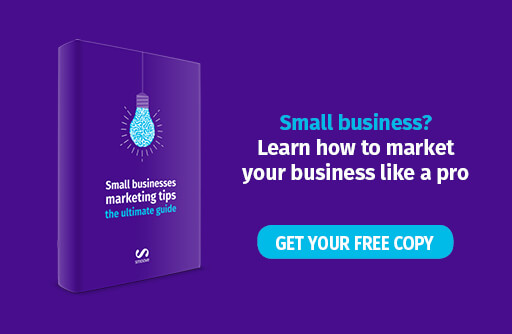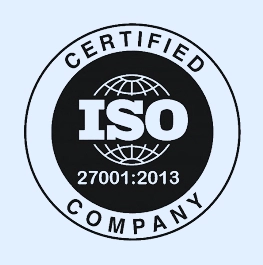Technology is causing the rapid advancement of digital marketing, which means to stay relevant, you have to continuously assess, test and create solutions to grow your business’ digital marketing presence. In fact, 76% of people believe that marketing has changed more in the past two years than the previous 50.
In particular, email marketing requires more strategy as people turn to social media, podcasts and additional platforms that had previously never existed to stay engaged with their favorite brands. So, we compiled a list from over a handful of marketing experts to provide you with the best digital marketing hacks to keep ahead of the trends.
These tips come from CEOs, digital marketing consultants, authors, business owners and more to really provide the ultimate list of quick tips to implement successful marketing strategies.
Let’s take a look:
1. Don’t Be Afraid of Social Media
“Whether you are a small business or a big corporation, there is a space for you on social media. It’s understandable as a new entrepreneur to be hesitant to implement a social media marketing strategy, particularly if you have a small team or a limited budget.” – Kurt Lohmann, Digital Marketing Consultant and Founder at Engaged Digital
With over two billion active users on social media, you can interact directly with your target audience. But, it’s important to establish an authentic voice and target your messages based on the platform you choose to use – Facebook, Instagram, Snapchat, Pinterest, Twitter, etc. By assessing metrics across platforms, you can then tailor your approach to focus on the platform where you find your audience to be most engaged.
“With the ever-increasing number of channels to communicate with your customers, the more tools to simplify and streamline your online presence, the better. But when it comes to choosing a medium for your message, the decision becomes more dizzying.” – Michael Peggs, Founder of Marccx Media
This is why it’s important to utilize multiple touchpoints to turn one time customers into buyers. People choose to interact across different channels based on their preferences, so if you’re consistently communicative throughout various outlets, you are maximizing your ability to interact, inform, and gain feedback from your audience.
“Accessibility will continue to play an important role in email marketing going forward, though marketers need to embrace accessibility across all channels, not just email.” – Paul Airy, Email Design and Development Manager at Skipton Building Society
Use metrics and analytics to create data-driven decisions in choosing where you should spend your time on social media to optimize ROI. Social media is an open and infinite platform; don’t be afraid to get involved, test your ideas, and then invest in what works.

2. Implement Successful Newsletters
“While email marketing has an unfortunate reputation for being a cheap marketing channel, lots of brands have wisely decided that they want to maximize their returns from this high-ROI channel by investing heavily in their teams and tools.” – Chad White, author of Email Marketing Rules and Research Director at Litmus
There are many reasons to create a newsletter for your business. Starting with a natural way to collect email addresses to grow your database, email marketing is a direct way to keep in contact with your customers by offering promotions, business updates, information and the like.
So where do you begin?
Start by defining your goals and then tailor the content to reach that goal. For example, if you want to drive sales, offer special promotions and segment your audience based on purchase history so you can offer them the products they have shown interest in.
“Something Marketers mustn’t do: Forget that your audience is made up of people. Would you like to get 3 emails a day with basically the exact same messaging, when you’ve opened the previous two thinking they’re different? No? Then why would your users like it? Use common sense and segment your heart out.” – Amanda Soehnlen, expert in analytics, design, coding and psychology.
If your goal is to drive traffic to your blog, offer some of the content that hooks the reader, and then insert a call-to-action button to “read more.” Another simple hack that often goes unused for email marketing is implementing preview text that maximizes opens. You can check out the hack that HP uses so well here.
So how do you your customers to open your newsletters? It’s important to remember that with email newsletters, content is king. When onboarding a new customer, be sure to drive them to the next step you want to take by being direct with your call-to-action.
Alex Williams, Senior Vice President at Trendline Interactive, reminds us: “A bad first button CTA in your welcome email kills your subsequent onboarding emails. Give value!”
The truth is, the conversation goes beyond just content. It also comes down to timing. If you don’t know the best time to send your newsletters when first getting started, try A/B testing based on different parts of day and even subject lines. Simply set your automation software to schedule the send and define a sample size so that a percentage of your list gets each email variation. The email that is most opened in that sample size will then be sent to the remainder of your list. Typically, it’s advisable to send newsletters on Tuesday and Thursday mornings and to avoid Mondays and Fridays as people are overwhelmed or checked out because of the weekend.
“Don’t forget to think about the physical as well as the mental state of your client when they read your email.” – Jeanne Jennings, Founder and Lead Strategist at Email Optimization Shop, Consultant, Trainer, Speaker and Published Author
3. Listen to Your Customers
“Great marketing is about listening to your customers and improving their lives with your products or services. Email marketing is no different.” – Scott Cohen, Email Marketing Strategist, Marketing Copywriter, Lecturer, and Blogger at ScottWritesEverything
You should only want to give your customers the information and offers that they want to receive, otherwise, you’re disrespecting their time and attention. In an overly saturated digital world, your brand’s ability to capture attention and provide value will make or break your business, so you can tailor your digital marketing efforts around this goal for a useful user experience. Begin by using opt-ins, and do not buy an email database.
Jaina Mistry, Email Marketing Specialist at Litmus, warns, “Never buy an email list. It’s a waste of time, money, and it won’t end well. There are so many better ways to build your list. Be a good email marketer and leave list buying well alone.”
To get started, create an opt-in form that either asks for a user’s preferences on the kind of information they’re interested in receiving on the pop-up form submission or in the first welcome email. This way, you can segment your lists and direct content at each segment to give them what they ask for. Be as transparent as possible – tell customers what kind of information and how frequently they can expect to hear from you.
As Matt Helbig, Senior Analyst, Marketing Operations at Digitas + Community Really Good Emails, says, “Marketers must make email preference centers part of their marketing efforts. It’s important subscribers know what they are signing up for and the frequency.”
4. Personalization is Paramount
“I see 2018 as the year where email marketers start really focusing on meaningful personalization. Specifically, making sure that emails are relevant and received at the right time within the customer’s lifecycle.” – Jacques Corby-Tuech, Email Marketing Manager at Paymentsense
“Email is the driver and catalyst for amazing relevant relationships.” – Samantha Iodice, Expert Email + CX Strategy, Speaker, Social Media Chairwoman and Charter Member at Women of Email
Customers should feel like the message they receive was amtailored specifically for their eyes. The first step in personalization is segmentation based on audience demographics, preferences, purchase history, engagement levels, etc. Then, you can tailor the message starting with using a customer’s name in a message through your automation platform. But, you can take this even further by using data to actually address their movement through the sales journey with your business to make it feel like you really know their habits, preferences, and their desired next steps. Create a seamless customer journey by directing your messages to users at the right time, and in the right tone.
Email marketing and personalization are all about relationship building. By addressing your customer’s needs, you are able to lead them to the next step through the right messaging.
5. Set the Tone
“Emojis are great in email because they distill a lot of information, and convey it quickly. We predict being genuinely emoji literate will continue to be a coveted skill in 2018 and beyond.” – Mike Ragan, Freelance Email Designer and Developer
Speak to your customers as you would speak to your friends. Open the linmes of communication immediately when you gain a new customer and stay true to your brand’s voice throughout all forms of communication. If your business calls for it, digital marketing can be playful, too. Emojis have become a language in and of themselves, and they can benefit your business because they express a lot of information in a small amount of time and space. In email marketing, emojis can be used in subject lines, but more importantly, emojis are great to implement in social media, where your space is literally limited, like the 140 characters Twitters allows.
In the same vein, make sure you let your pictures do the talking, too. Choose imagery that is captivating and contextually relevant to the copy that accompanies the image.
The Wrap Up
While digital marketing is robust and always evolving, it doesn’t have to be overwhelming. With these expert tips and Smoove’s automation platform, you can implement all of these solutions to drive customer engagement all from one place. That means, you can grow your CRM, manage your database, segment your lists, create newsletters, engage on social media, and track your ROI to maximize your digital marketing strategies.


